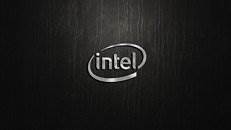Intel today announced their quarterly earnings for Q4 of the 2016 fiscal year. The company set a new record for revenue for this quarter, coming in at $16.4 billion (up 10% from a year ago, which stood at $14.9B). For the year, Intel brought in $59.4 billion, up 7% from their 2015 results. Intel’s gross margin fell, though, by 1.7 points down to a still hugely respectable 60.9%, with operating income of $12.9 billion, down 8% from a year ago. Net income was down 10% to $10.3 billion, and earnings per share fell 9% to $2.12. Intel announced a record annual cash flow from operations of $21.8 billion, with solid earnings with GAAP net income of $10.3 billion, and non-GAAP net income of $13.2 billion.
Leaving the corporate numbers talk behind us for a moment, this means that Intel managed to have another astounding year, with solid execution and even more solid margins and revenues. However, take a peek under the hood, and Intel’s wins are based on consumer losses: lower volumes in almost all channels were offset by higher average selling prices (ASP), meaning that Intel is (like any company on the top would) keeping its revenue streams up by charging more for its products.
Intel’s Client Computing Group, which provides CPUs, SoCs, and wireless and wired connectivity products destined for PCs, had revenue for the year of $32.9 billion, up 2%, but with platform volume being down 10%. The fact that Intel managed to increase revenue with lower volume of shipments is directly charged to the consumer, with an 11% increase in platform selling prices. For the last quarter, the Client Computing Group had revenues of $9.1 billion, up 4% from a year ago, with platform volumes being down 7%, and again, this difference being offset by selling prices up 7%. Desktop platform volume was down 9%, with a lower increase in the ASP at just 2%, while notebook volumes remained flat but with a platform average selling price being up by 3%. What we see here is Intel basically making up the loss in revenue that would be expected with lower channel volume by increasing the ASPs of its platforms – this means the company can try and remain its revenues at the same level, even with lower volume of sales, though this burden then passes towards the consumer, who has to pay more for the same average product. Here’s hoping increased competitiveness in the Client and Computing segment will bring more options to consumers, and thus a need for Intel to rethink its revenue targets at the expense of customers.

The Data Center Group also had a strong quarter, and year. For the year, Intel announced revenue of $17.2 billion, up 7% from $16.0 billion a year ago. For the year, Intel saw volumes up 3% and ASP up 4%. For the most recent quarter, the Data Center Group had revenues of $4.7 billion, which was up 3%. Platform volumes were down 3%, with ASP up 6%.

Intel is ever more increasing its investment in the Internet of Things group, which had revenues for the year at $2.6 billion, up 13% from $2.3 a year ago. Revenue for this quarter was up 5% to $726 million. The Non-Volatile Memory Solutions group had revenues for the quarter of $816 million, up 26% from a year ago, and a full-year revenue of $2.58 billion, down slightly from the $2.6 billion a year ago. Programmable Solutions is new for Intel this year, with the purchase of Altera, and this segment had revenue of $420 million for this quarter, and $1.7 billion for the year.

All in all, it would seem that 2016 has been a somewhat strange year for Intel, with the official death of the tick-tock cadence of process shrinks and new architecture development (arguably dead before then, but I digress) and the gutting of Intel’s mobile SoC aspirations. Lower overall channel volumes (which can be justified by both a stagnation in innovation and the “good enough” mentality which most customers can now have regarding their systems) were offset by increased selling prices, but these can only do so much. If the market continues its trend, Intel will have to revise its overall growth and revenue targets, since there is only so much that the average consumer is willing to part with in acquiring their technology. However, it has to be said that Intel has done some tremendous strides in increasing the overall areas in which they compete, with a timely and savant acquisition of Altera, and their investments in the Internet of Things segments.

Source: Intel Shareholder Release, Intel Earnings Conference







